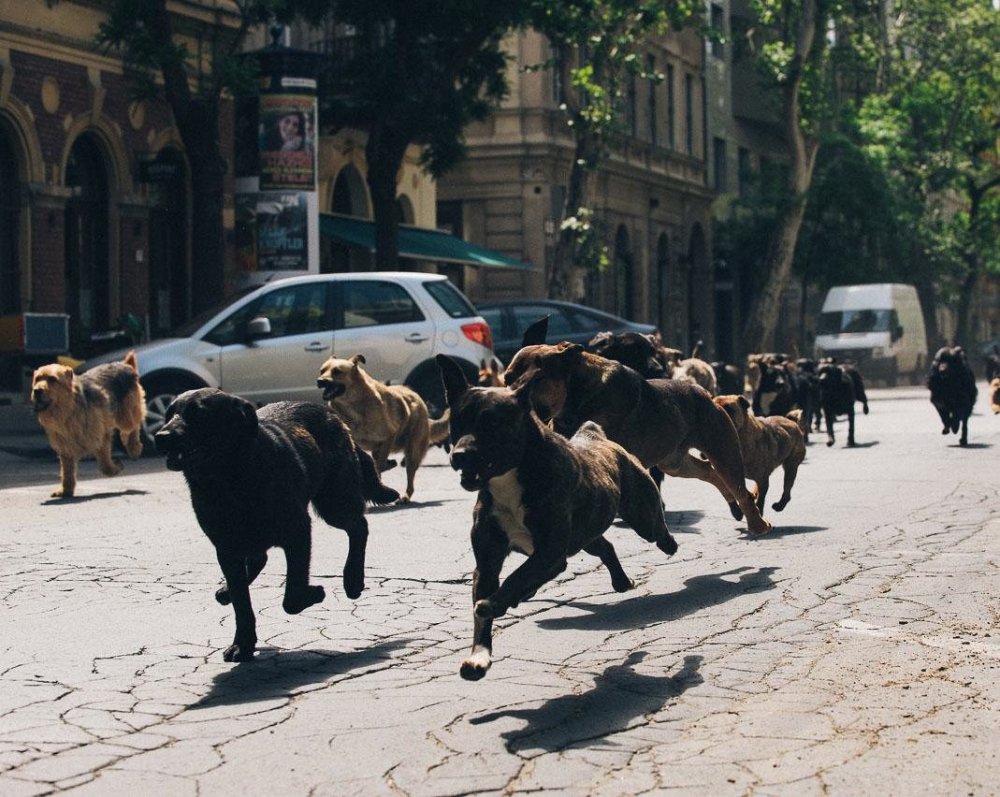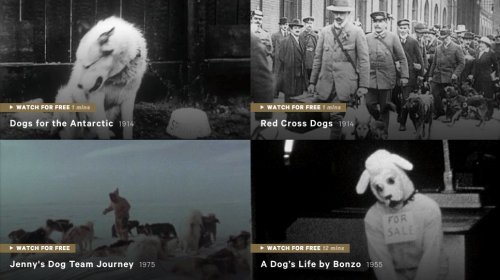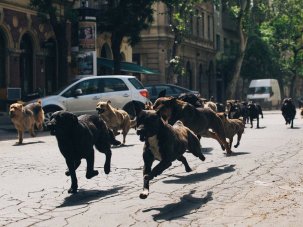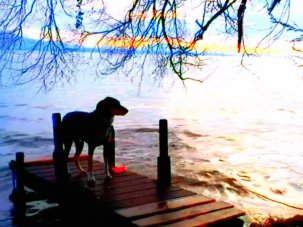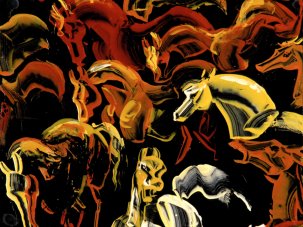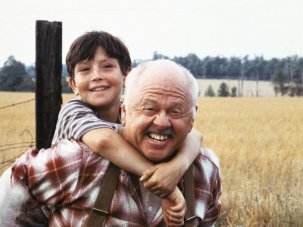The most impressive parts of Kornél Mundruczó’s canine-apolcalypse drama White God (Fehér isten), released this month on DVD and Blu-ray, are the sequences in which an enormous pack of dogs stampedes through the streets of Budapest, while the human populace flees in panic. The production reportedly used 274 dogs, more than any other film in history, and the statistic doesn’t seem implausible as the furry tide surges across the frame; it’s a spectacle that stays in the mind. Even so, there is something unsatisfactory about these moments: the dogs, escaped from the pound, are supposed to be in revolt, animal Spartacuses raging against cruel human masters; but with their ears flapping, their tongues lolling, tails erect, they all look so happy. The intention seems to be The Birds or Rise of the Planet of the Apes; the effect is more dog-food commercial.
White God is out now on DVD and Blu-ray in the UK. Goodbye to Language and many of the other films cited in this history are also available in the UK: see findanyfilm.com.
But this is a neat example of the central problem filmmakers have with dogs. What makes them appealing – apart from the obvious furriness and big brown eyes – is their natural expressiveness, their lack of self-consciousness, their sincerity: dogs offer feeling magnified and purified, not constrained or distorted by language or ambition. But though filmmakers value the appearance of sincerity and spontaneity, what they need, if they want to get things done, is feeling faked to order: acting. A very highly trained dog can do something that looks rather like acting, but the awful truth is that dogs can’t act; when they are in front of a camera there is no guarantee what they will do.
Mongrel invasions
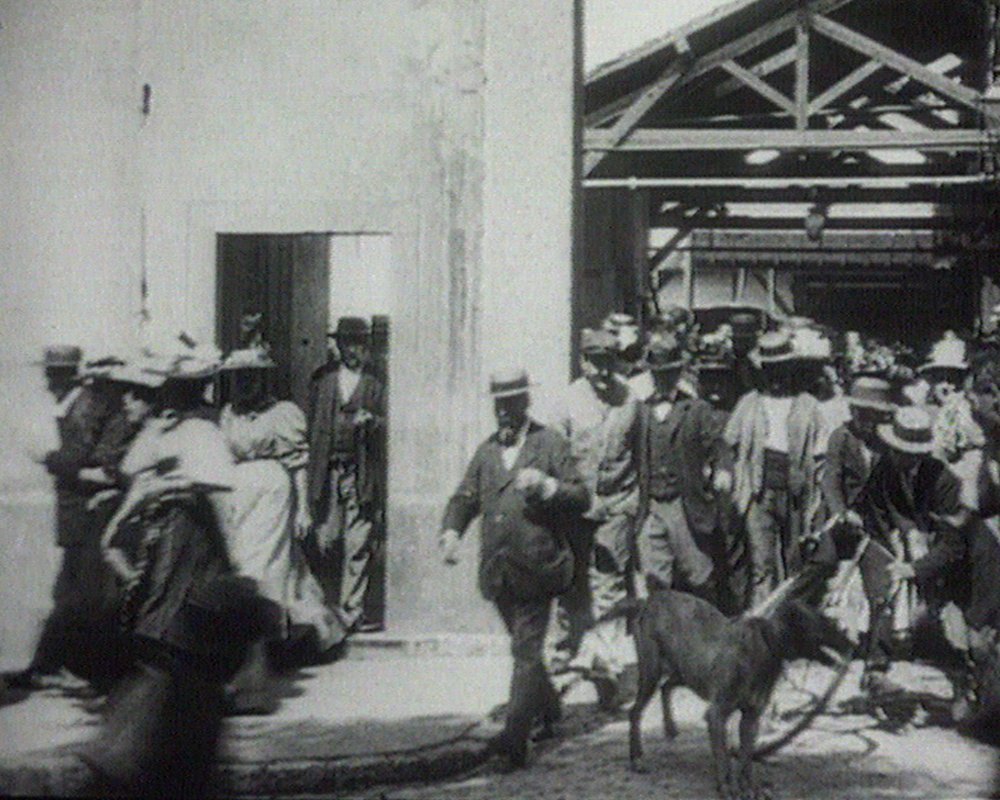
Workers Leaving the Lumière Factory (1895)
The history of dogs in cinema falls naturally into three phases. The first phase begins at the beginning: at the first ever paid-for film show, on 28 December 1895, the Lumière brothers showed among other things the 45-second industrial epic Workers Leaving the Lumière Factory. This features two dogs – all three extant versions of the film show a large mastiff-style dog, perhaps a dogue de Bordeaux or some mongrel version (result of a Bordeaux crossing?), which strides in and out of the frame and bounds around among the press of workers hurrying home. But the first version opens with a smaller, elderly looking dog, mostly white – it looks a little like some kind of setter – lying on the ground, so pale against a light background that it’s possible not to notice it.
Even before then dogs, or at least one dog, appeared on film: in 1894 the Edison company shot a 40-second film called Athlete with Wand [▶︎︎], in which a muscular man performs exercises with a long stick, while a black dog lies curled on the floor next to him, at one point craning its neck to see what he’s doing before returning to the wise indifference to human vanity that is one of the dog’s great gifts to us.
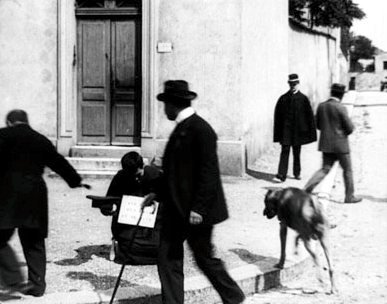
Le faux cul-de-jatte (The False Cripple, 1897)
This is the age of the incidental dog – the dog before filmmakers have started making him do what he’s told. As the film historian Luke McKernan, among others, has pointed out, the number of stray dogs in early films is considerable. They strut in at the edges, drawing the viewer’s gaze away from the supposed focus of attention, often in films of actuality, sometimes in staged dramas such as the Lumières’ Le faux cul-de-jatte (The False Cripple, 1897), a sketch in which, while the legless beggar is exposed as a fake, like Eddie Murphy at the start of Trading Places, a dog trots along the pavement behind him and pauses to urinate against the wall. The presence of these dogs tells us something about early cinema, about how casual it was, how open to the world; it may tell us more about dog-owning a century ago – dogs wandered around unsupervised in a way that has become rare. Such incidental dogs are a reminder that the world our ancestors inhabited was in some ways less buttoned up than our own.
Pooches on pedestals
The second and shortest phase – an interlude, really – was the age of the dog as movie star. Throughout the 1920s, films starring dogs, particularly German shepherds, were hugely popular – it’s been estimated that at the height of the craze there were around 80 German shepherds ‘acting’, or the dog equivalent, in Hollywood.
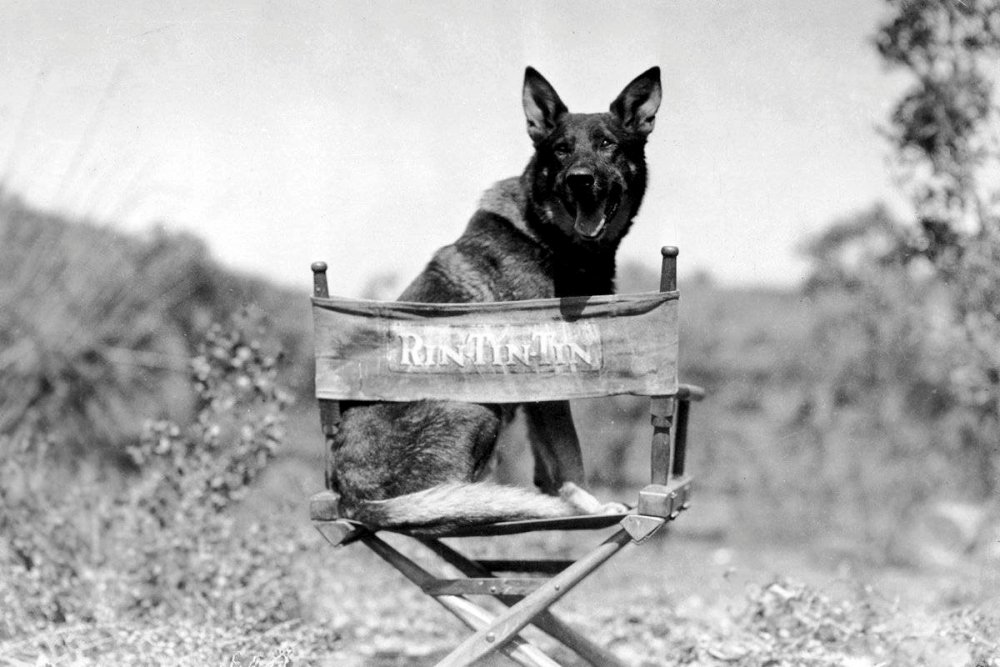
Rin-Tin-Tin
The biggest dog star was Rin-tin-tin, who across 23 films – of which half a dozen survive – was one of the biggest box-office draws of the decade: his movies’ profits saved Warner Brothers from bankruptcy and helped to turn it into a major studio; writing for him was Darryl F. Zanuck’s route into Hollywood.
‘Rinty’ was interesting for attaining a level of fame unmatched by any other dog actor (as opposed to a dog franchise, such as Lassie); and for coming closer to being an actor. At any rate, that was his reputation: the poet Carl Sandburg called him “thrillingly intelligent” and wrote: “He has a power of expression in his every movement that makes him one of the leading pantomimists of the screen.” In stage shows, his owner Lee Duncan, who’d rescued him as a puppy from a French battlefield in 1918, would take him on command through a gamut of facial expressions.
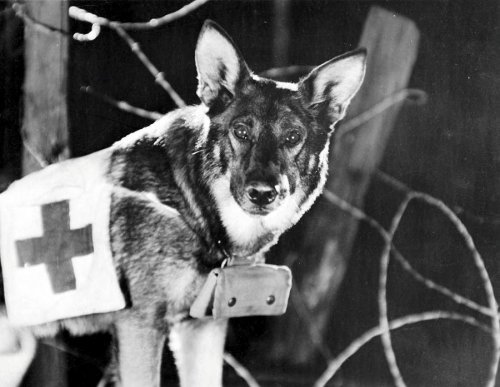
Rin-Tin-Tin
Looking at footage of Rinty, I don’t see this emotional nuance – but people will always project what they want to see onto dogs. What you do see in Rin Tin Tin is a creature well choreographed but also relaxed and at home in its own skin; next to the overt expressiveness of silent actors, he is incongruously natural.
Echoes of Rin Tin Tin-style heroics can be found in a number of later films: one of my own earliest cinema memories is of the entire auditorium bursting into applause as Buck the German shepherd wreaked havoc among hostile injuns in the 1972 Charlton Heston version of The Call of the Wild (in the book, Buck had been a St Bernard cross).
Muttaphors
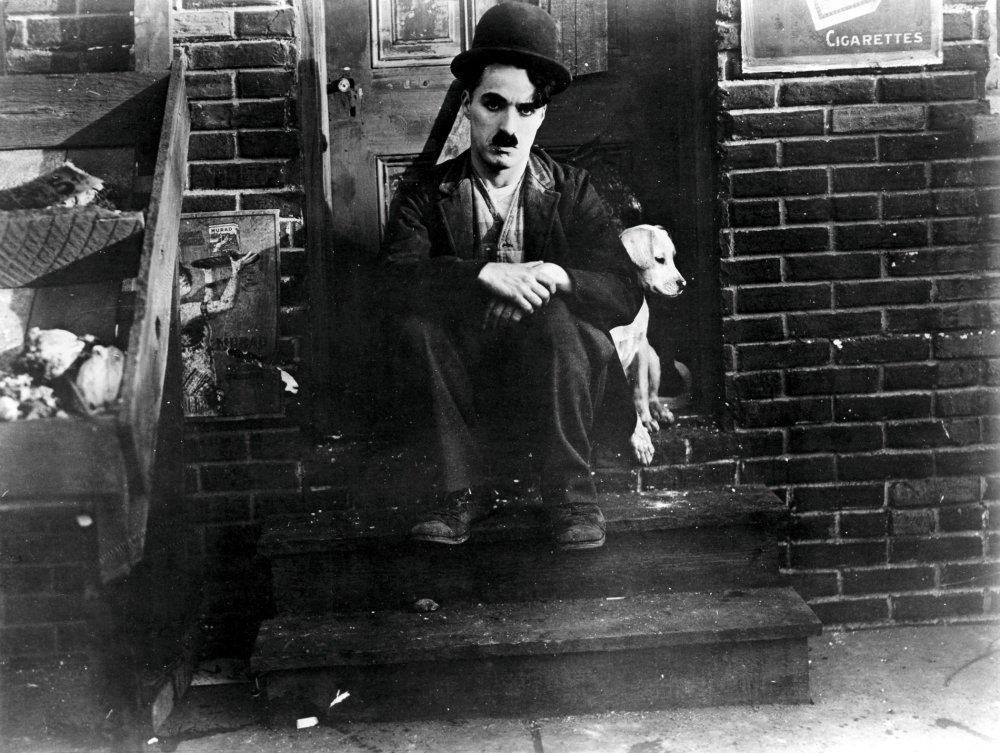
Scraps and the Tramp in A Dog’s Life (1918)
But with the advent of the talkies, the final phase of dog film history began: dogs as props. My time scheme is, admittedly, artificial; you can see the start of this trend at least as early as 1918, in Charlie Chaplin’s A Dog’s Life, in which the trials of “Scraps, a thoroughbred mongrel” (played by Mut) mirror those of the little tramp; but as in most things aside from the adoption of sound, Chaplin was ahead of his time. Over the last 80 years of film history, dogs have been largely confined to a series of symbolic functions; the dogs you see on screen have all the real doggy unpredictability edited and choreographed out of them; they are reduced to foils for human stars; the freedom and indifference to human silliness that dogs display in early films – and that dog-owners value – have been set aside.
The template was established by the career of Skippy, the well-trained wire-haired fox terrier who became the biggest dog in film in the mid 30s, playing Asta in The Thin Man (1934), Mr Smith in The Awful Truth (1937) and George in Bringing Up Baby (1938).
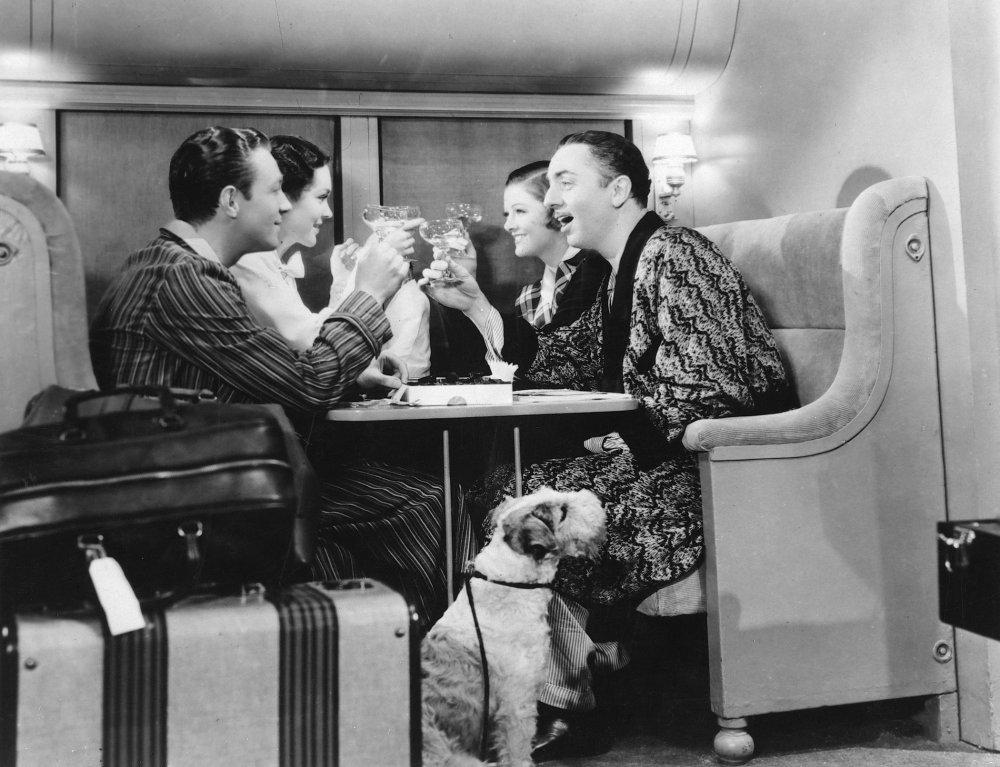
The Thin Man (1934)
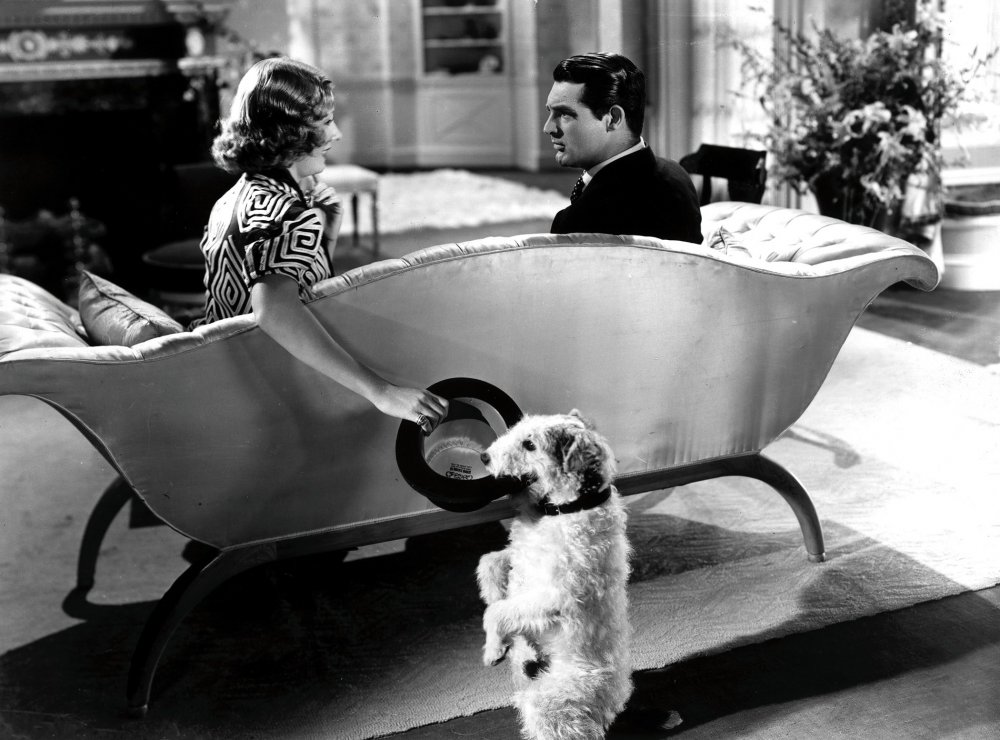
The Awful Truth (1937)
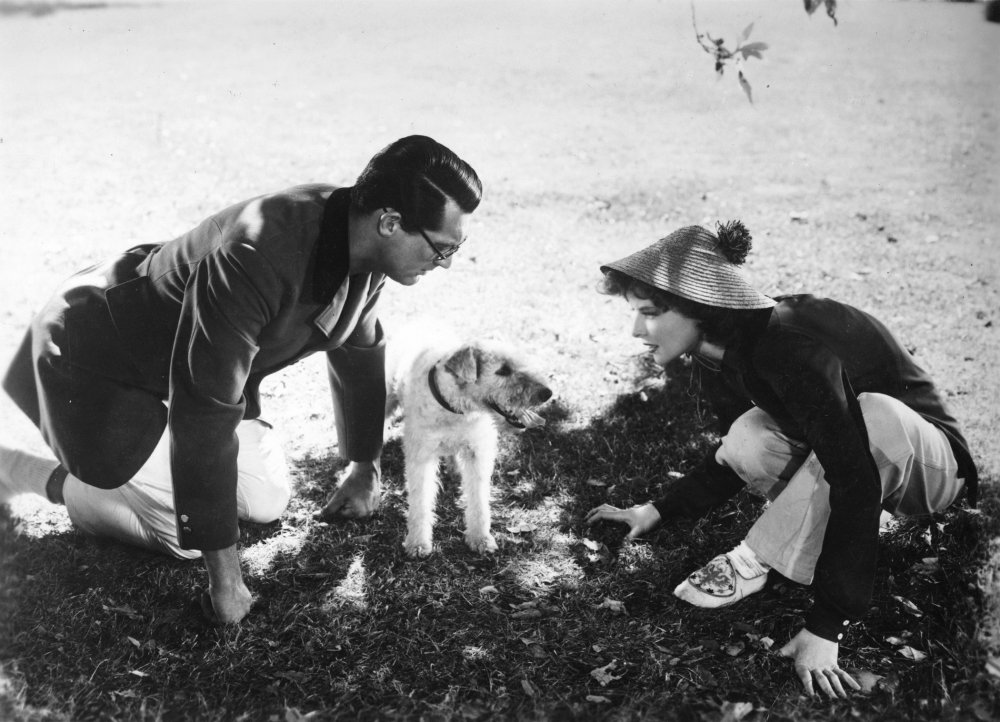
Positively the same dog: Skippy as, respectively, Asta in The Thin Man (1934), Mr Smith in The Awful Truth (1937) and George in Bringing Up Baby (1938)
In all those films, he is somehow implicated in a screwball romance – for William Powell and Myrna Loy in The Thin Man and Cary Grant and Irene Dunne in The Awful Truth the dog is clearly a child substitute (as Scraps had been for Chaplin and Edna Purviance in A Dog’s Life, which ends with the pair settled into rural domesticity, the dog rocking in a cradle). For Grant and Dunne, and for Grant and Katharine Hepburn in Bringing Up Baby, the dog is cupid, bringing together a couple who might never find each other. The dog is a disruptor of over-tidy lives, and a tactless conveyor of truth – the funniest scene in The Awful Truth is when Dunne is trying to hide from Grant the hat that will give away the presence of her too-handsome singing-teacher, but the dog keeps turfing it out again.
You can see these roles repeated over and over by other dogs in later films: Pongo and Perdy playing cupid for Jeff Daniels and Joely Richardson in the tiresome 1996 version of 101 Dalmatians; the drooling dogue de Bordeaux messing up the life of neatness freak Tom Hanks, and then introducing him to the attractive lady vet, in Turner & Hooch (1989); Toto tearing back the curtain that hides in The Wizard of Oz (1939); the terrier scrabbling at the flower bed in Rear Window (1954) – and getting his neck broken for his trouble.
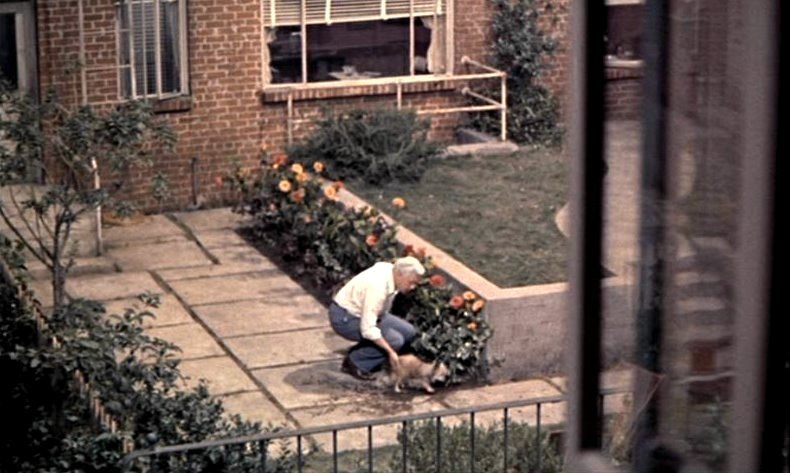
Rear Window (1954)
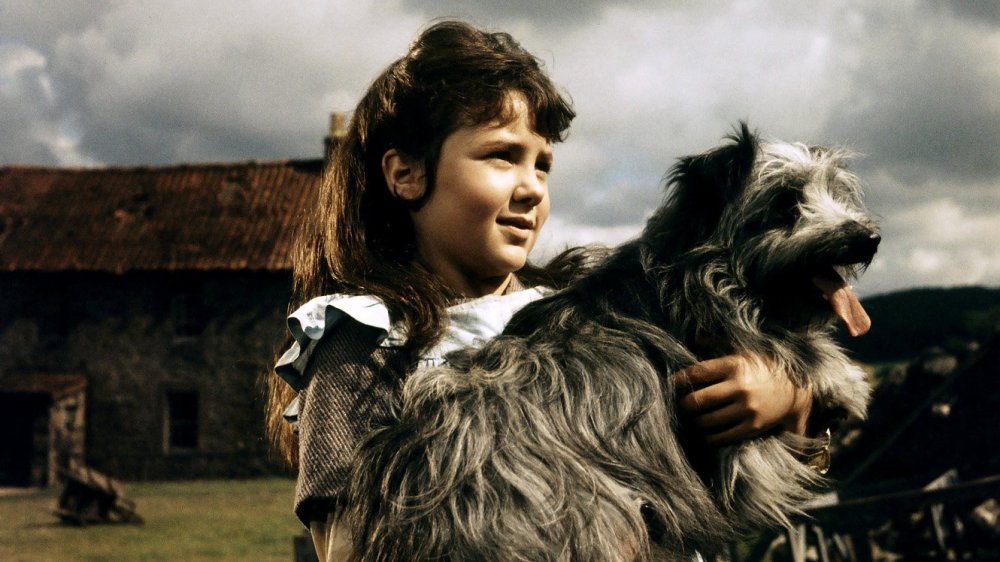
Greyfriars Bobby: the True Story of a Dog (1961)
Sometimes dogs are not nearly this interesting, turned into are bland (but, to the sentimentalists among us, hopelessly moving) symbols of fidelity, as in Lassie Come Home (1943) and several variations on the Greyfriars Bobby theme, the dog faithful even after death: aside from the 1961 film of Greyfriars Bobby, there is Challenge to Lassie (1949), the Japanese film Hachiko Monogatari (1987) and its American remake, Hachiko: A Dog’s Story (2008).
Occasionally they are allowed to be symbols of something darker: Hagen in White God is in trouble with the authorities because he is not a pure Hungarian breed (this isn’t an actual Hungarian law, though such a law was proposed a few years ago).
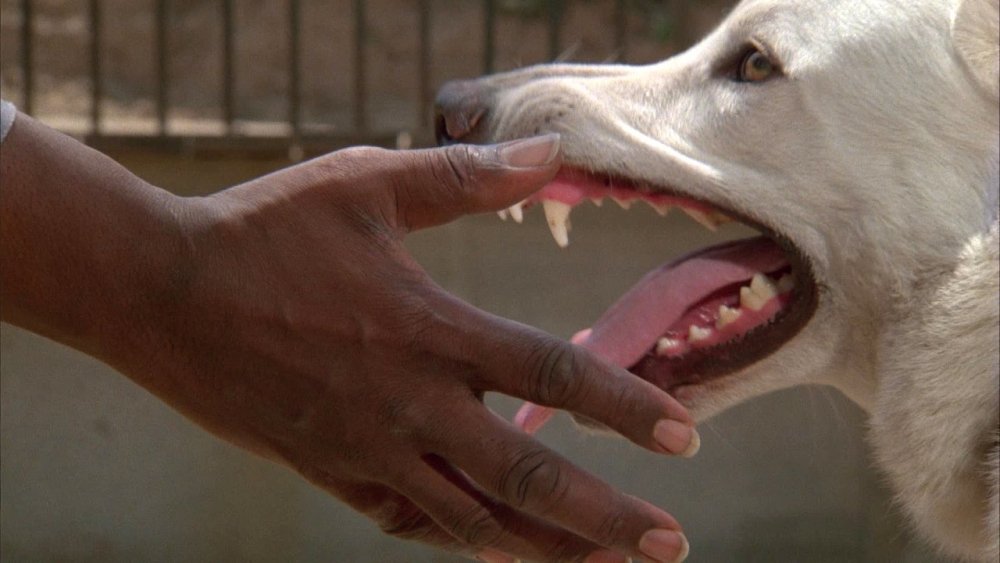
White Dog (1981)
That film seems to owe something, including its title, to Sam Fuller’s White Dog (1982), in which a handsome white German shepherd turns out to have been trained to kill black people. The film is a creakingly overdetermined allegory of racial intolerance, nature versus nurture – but while it isn’t the ‘Jaws with paws’ that the studio wanted, between the dog, Paul Winfield as the trainer who tries to overcome its conditioning and an unusually understated score by Ennio Morricone it does become a weirdly intense and wrenching experience; and at one point – when the dog rescues its new owner from a rapist – it shows that the spirit of Rin-tin-tin is not dead.
Furballs in the throat
Two trends have been noticeable in recent years. One is the rise of the tiny yappy dog as comic prop: Puffy the Border terrier in There’s Something about Mary (1998), fastening its teeth into Ben Stiller while under the influence of amphetamines, Reese Witherspoon’s chihuahua Bruiser in Legally Blonde (2001) and Bonny the shih tzu, the macguffin of Martin McDonagh’s Seven Psychopaths (2012).
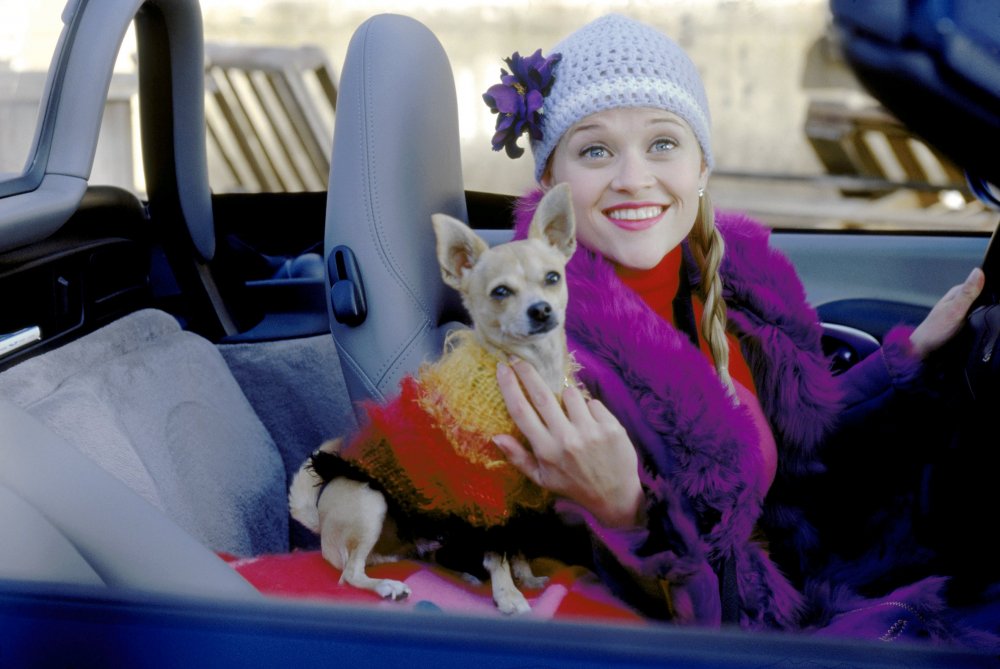
Legally Blonde’s ‘Bruiser’
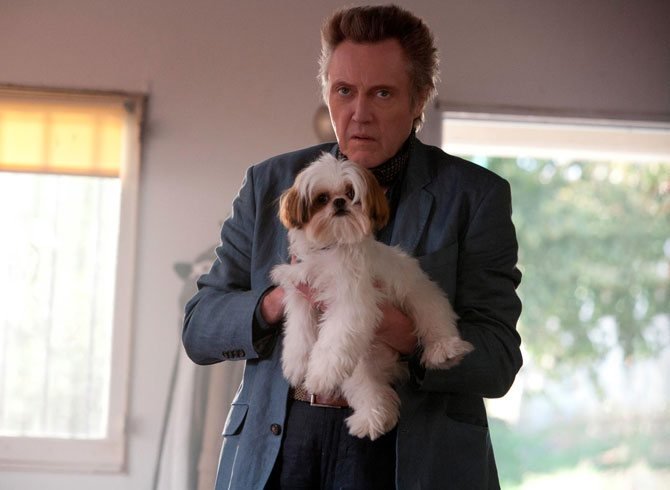
Seven Psychopaths’s ‘Bonny’
The other is the killing of dogs for shock effect, something Joe Queenan wrote about recently in the Guardian, though vestiges of the taboo against dog killing remain: CBS is supposed to have vetoed the shooting of Bonny in Seven Psychopaths. As the Sam Rockwell character says, “You can’t let the animals die in a movie, just the women.”
Those who share CBS’s squeamishness can turn to doesthedogdie.com, which allows you to check its database of dog films for possible morbidity. Others can turn to Wes Anderson, our greatest living auteur of dog deaths: Buckley the Beagle crushed by a car The Royal Tenenbaums (2001), Snoopy the wire-haired fox terrier – a descendant of the great Skippy? – taking an arrow through the neck in Moonrise Kingdom (2012). Anderson is less interested in shocking the audience than in establishing life’s random injustice, something dogs know all about.
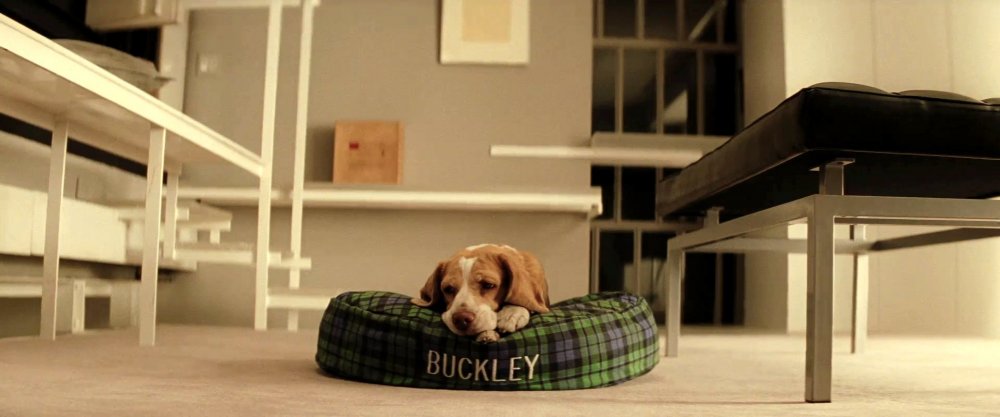
The Royal Tenebaums’ ‘Buckley’
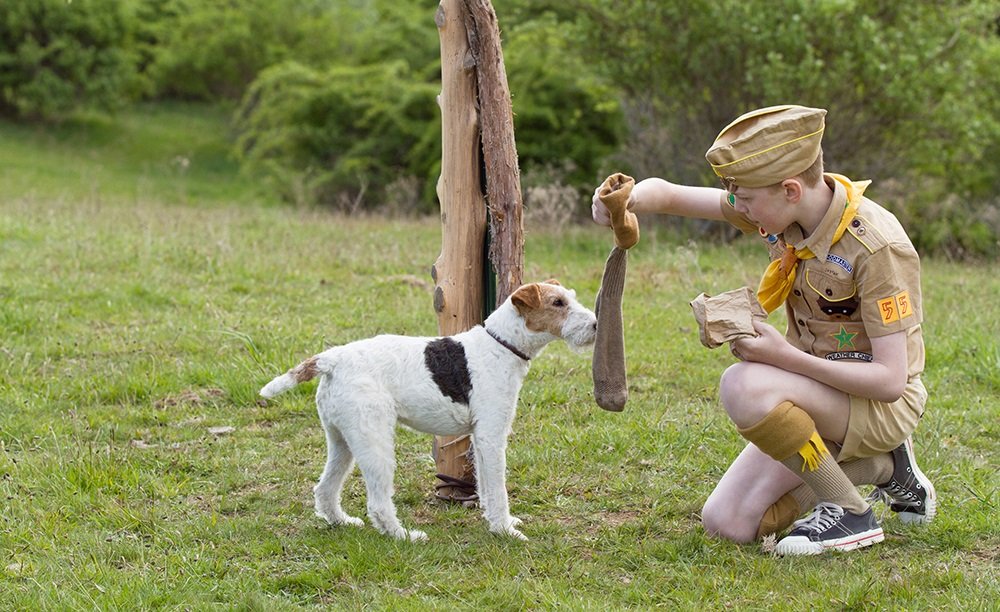
Moonrise Kingdom’s ‘Snoopy’
But the only director who seems prepared to grant a dog real autonomy and complexity is Jean-Luc Godard: in Goodbye to Language (2014), Roxy, Godard’s own dog, isn’t entirely freed from a traditional symbolic role, even if he is permitted to invert it – appearing at the moment that one of the film’s women tells her man: “We no longer love each other. We never loved each other.”
Insofar as you can piece a story together from the movie’s fragmentary, doubled narrative, it seems that this dog has at one point been abandoned by a motorway, and is later abandoned on a jetty in Lake Geneva: the dog as victim. But as Roxy snuffles about in woods and a river – the instinctual animal – he also seems to have a whole life, beyond illusions of language and love, in a way that humans never can. For once, it feels as though we’re seeing a real, self-sufficient dog.
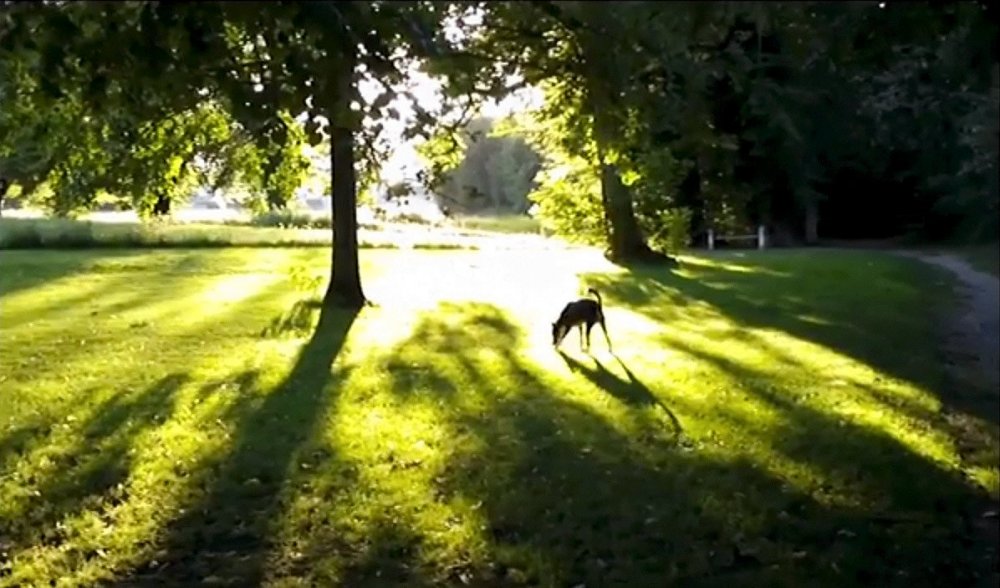
Goodbye to Love’s Roxy
-
The Digital Edition and Archive quick link
Log in here to your digital edition and archive subscription, take a look at the packages on offer and buy a subscription.




